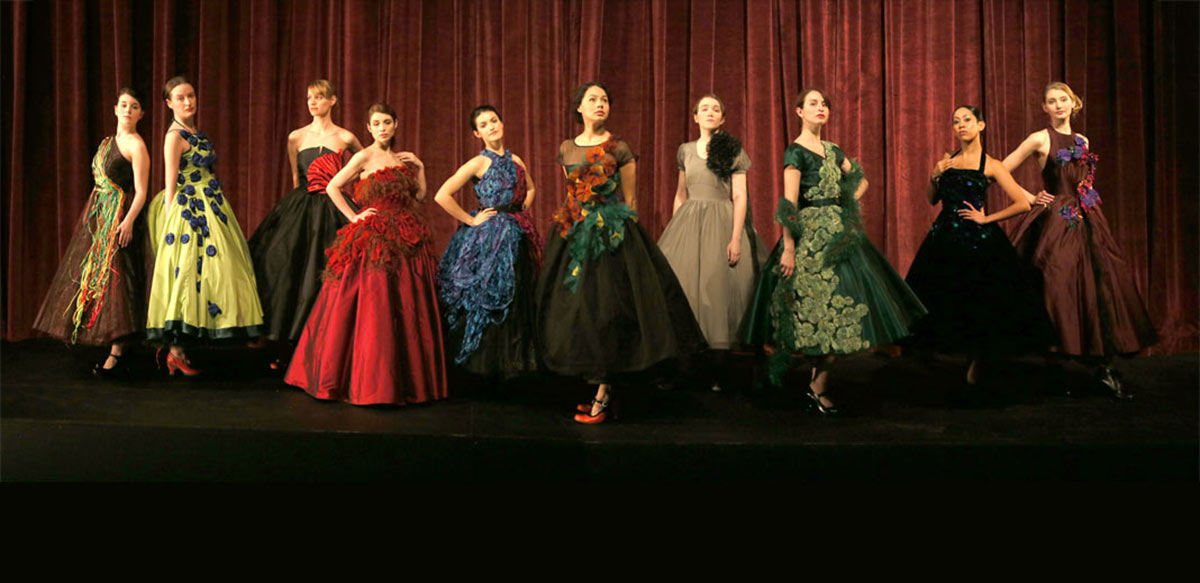
Models of the Fashioning Cancer Collection. Photo credit: Tim Matheson
FASHIONING CANCER:
THE CORRELATION BETWEEN
DESTRUCTION AND BEAUTY
March 25, 2014 | 12-1pm
Free Public Presentation
Graduate Research Seminar Series:
Frederic Wood Theatre, UBC
If you are a woman who has battled cancer we would very much appreciate knowing your response to the gowns, negative or positive. Please send your comments to Associate Professor Jacqueline Fikins at jacqueline.firkins @ ubc.ca and indicate if you would consent to have your comments included in her research paper when goes to print at the end of March, 2014.
Fashioning Cancer: The Correlation between Destruction and Beauty is a “dramatic” new interdepartmental research project at UBC made possible through a Research Mentorship Grant from the Peter Wall Institute For Advanced Studies
Watch the Canadian Press Video »
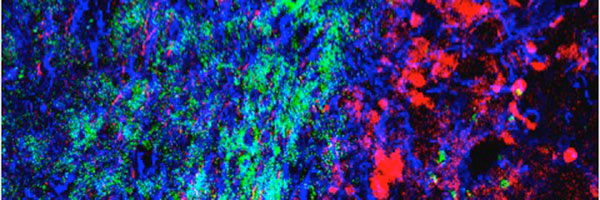
Normal brain area on the left (blue and green) encountering invading cancer cells (glioma; red). Studying how cancer cells interact with normal cells is key to understanding ways to prevent invasion and metastasis of cancer cells.
Photo Credit: Wun Chey Sin, Ph.D., Christian Naus, Ph.D.

Astrocytes growing in a culture dish. Blue dye indicated the nuclei (DNA); green color shows the location of gap junction channels which link the cells in a metabolic community. These channels are important in controlling the normal growth of cells; their disruption can promote cancer development.
Photo Credit: Hoa Le, Ph.D., Christian Naus, Ph.D.

Small instestine – blue color shows the cell nuclei (DNA) and green color is localized to membrane channels called pannexins. Membrane channels like these contribute to the microenvironment that can either enhance or inhibit cancer progression.
Photo Credit: Stephen Bond, Ph.D., Christian Naus, Ph.D.
NOTE: Not all the slides show cancer – only #4 & 8 in this selection (above).
The following slides are examples of cellular systems that UBC cancer researchers are studying because they are subject to having their modes of activity hijacked by cancer to spread itself. All photos of cells were taken by UBC researchers in their work (see photo credits).

During brain development, nerve cells (neurons; green) migrate along supporting cells (radial glia; red) to specific coordinates in time and space in order to develop a network on interconnections with other neurons. Similar processes are used by cancer cells when they invade normal tissue and progress to metastatic disease.
Photo Credit: Christian Naus, Ph.D., Cima Cina, Ph.D.
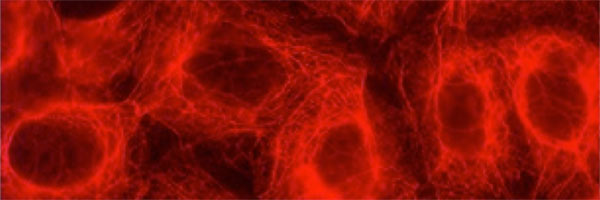
Astrocytes cells from the brain ensure that neurons remain healthy. can become cancerous and result in gliomas. These cells are stained to show their filamentous “cytoskeleton” which determines their shape as well as impacting their ability to move. In cancer cells, the more they move, the more aggressive the disease.
Photo Credit: John Bechberger, M.Sc.; Christian Naus, Ph.D.
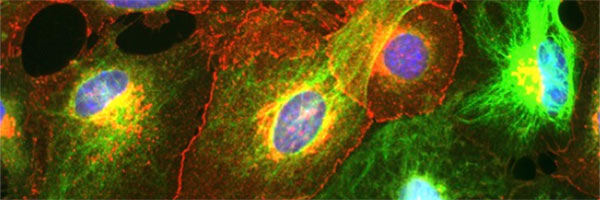
Astrocytes from the brain growing in a culture dish. Green color indicates the cytoskeleton of these cells; red color shows specific membrance channels (gap junctions); blue color indicates the cell nuclei (DNA). The ability to grow cells in a dish has contributed to our understanding of the changes theses cells undergo when they become cancerous.
Photo Credit: John Bechberger, M.Sc., Christian Naus, Ph.D.
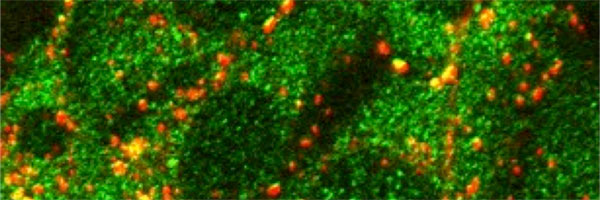
Brain cancer cells showing interaction of two proteins – gap junction channels (red) and a cell growth factor (green). Yellow indicates areas of the cell where both proteins interact. These types of interactions between proteins are critical in processes which can transform normal cells into cancer.
Photo Credit: Christian Naus, Ph.D.
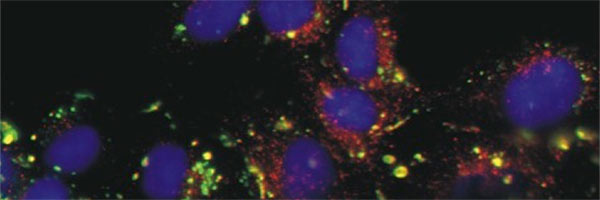
Brain cancer cells showing interaction of two proteins – gap junction channels (green) and a cell growth factor (red). Yellow indicates areas of the cell where both proteins interact. These types of interactions between proteins are critical in processes which can transform normal cells into cancer.
Photo Credit: Christian Naus, Ph.D., Christine Fu.